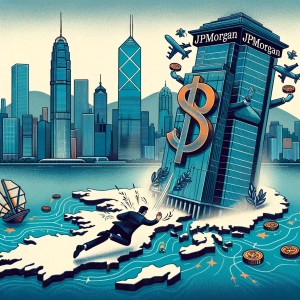Central banks, those bastions of monetary policy, are again under the microscope. This time, they face mounting pressure to alter their course in response to slowing inflation. It’s a delicate dance of economics, with the world’s eyes scrutinizing their every move.
Not long ago, these financial watchdogs were critiqued for dragging their heels in response to an alarming spike in prices. Now, they are being questioned for potentially overstaying their welcome in the realm of high borrowing costs.
A Eurozone Dilemma: To Cut or Not to Cut?
In the heart of Europe, the debate is heating up. The European Central Bank (ECB), once a sideline observer, now finds itself at the center of controversy. Eurozone inflation, a tricky beast, has dipped to 2.4%, the lowest since July 2021.
This near-target figure raises the question: Is it time for the ECB to loosen its grip on interest rates? Investors and economists are already betting on rate cuts in the early part of next year, signaling a shift in expectations.
It’s not just about numbers; it’s about reading the economic tea leaves correctly.
Italy’s situation adds another layer to this complex puzzle. With a new central bank governor at the helm and a heavy debt load to manage, Italy exemplifies the tightrope walk facing heavily indebted governments.
Rate decisions in this context aren’t just about inflation; they’re about financial stability and economic vitality. Across the channel, the UK’s central bank faces similar dilemmas, underscored by the country’s march towards a significant election year.
Meanwhile, in the US, the Federal Reserve maintains a firm stance, albeit with an air of cautious anticipation. Economic growth in the States has been more robust compared to Europe, but this doesn’t give the Fed a free pass. It’s a juggling act between maintaining credibility and adapting to evolving economic conditions.
The Art of Central Banking: A Balancing Act
The task at hand for central bankers is nuanced and fraught with potential pitfalls. They’re not just combating inflation; they’re also guarding against economic stagnation and unemployment. This isn’t a game of high stakes poker; it’s a carefully calibrated strategy to ensure financial stability without stifling growth.
Critics argue that central banks might be overly cautious, haunted by past missteps in underestimating inflation. Others, however, see wisdom in their restraint.
It’s a classic case of “damned if you do, damned if you don’t.” But, in the midst of this economic chess game, one thing is clear: the path forward is anything but straightforward.
Central banks, after all, are not just economic institutions; they’re political entities as well. They operate in the realm of public opinion and political maneuvering, where every decision is dissected and debated.
As such, they must navigate not only the murky waters of economic indicators but also the choppy seas of public perception and political pressure.
In summary, central banks find themselves at a critical juncture. The inflation slowdown offers a glimmer of hope, but the road ahead is littered with challenges. It’s a delicate balancing act, one that requires skill, foresight, and a bit of economic acumen.
Whether they will rise to the occasion or falter remains to be seen, but one thing is certain: the world is watching, and the stakes couldn’t be higher.





